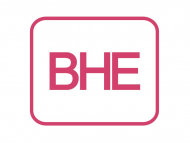Australian researchers grow mycelium in sheet form – A protective layer of charcoal is formed in the event of fire
Mats that protect against fire and leather-like materials for fashionable purposes will be formed underground in the future. Researchers at RMIT University (https://www.rmit.edu.au) have succeeded in growing mycelium in plate form. Mycelium is the underground network of fungi whose mass is far greater than what can be seen on the surface. It grows in organic waste – that is, what usually ends up in the green or brown bin. The research results (https://www.sciencedirect.com/science/article/abs/pii/S0141391023001714?via%3Dihub) were recently published in the journal Polymer Degradation and Stability.
Substitute for easily combustible cladding
“The great thing about mycelium is that it forms a thermally protective carbon layer when exposed to fire or radiant heat,” says Everson Kandare of RMIT. He and his team are focusing on developing biologically derived fire-retardant cladding for buildings to prevent tragedies like the Grenfell Tower fire in London, which killed more than 70 people and injured as many. The fire essentially fed on the highly combustible exterior cladding.
“We have found a way to grow pure mycelium for various purposes, from flat sheets for the construction industry to a leather-like material for the clothing industry,” says study author Tien Huynh. The material grown is no thicker than wallpaper. The researchers tamed the mycelium, which is normally a wildly proliferating structure of threads, by changing the growth conditions.
Usual fire protection disadvantageous
Today’s cladding material often contains plastic that produces toxic fumes and heavy smoke when burned, the researchers say. “Bromide-, iodide- and nitrogen-containing flame retardants are effective but have harmful health and environmental effects,” Kandare elaborates. “They can harm plant and animal life.”
A quick shift to fungal technology is unlikely, however. “Plastics are quick and easy to produce, while fungi are slow growing and relatively difficult to produce on a large scale,” Huynh explains. He has, however, already made contact with growers of edible mushrooms to expand their food production to include the manufacture of fire protection panels and leather-like material.





